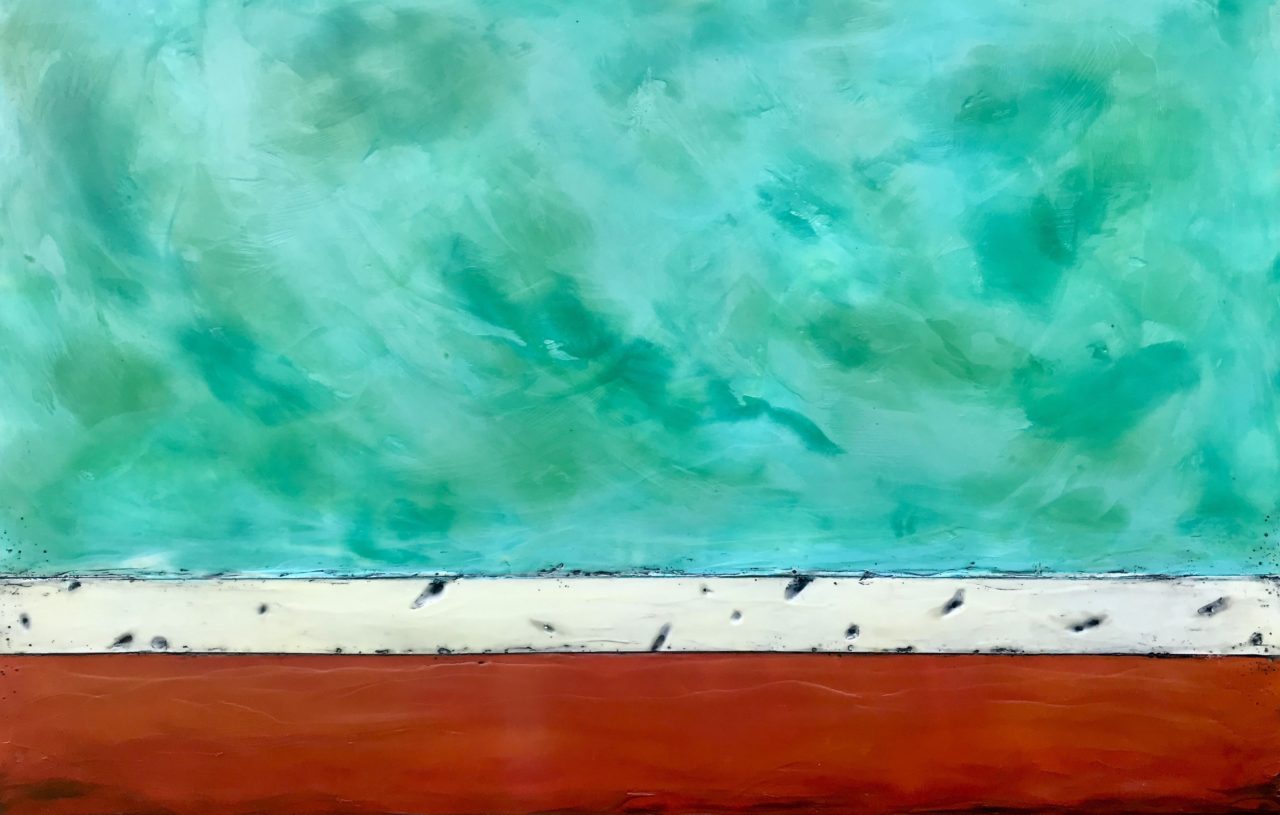A Brief History of Encaustic Painting
Fall 2019

Encaustikos, a Greek word that means “to burn in or fuse” is a combination of beeswax and resin, a tree sap. Due to its excellent preservative qualities the Greeks used it to weatherproof their ships as early as the 5th century BC. Pigmenting the wax allowed them to decorate war and merchant ships. (Artwork, Summer Guest by Tamera Abaté.)
In the 1st and 2nd centuries AD Greeks that had settled in Egypt eventually adopted the custom of honoring the dead by painting a portrait of the deceased to be placed over the person’s mummy. Many of these portraits are still intact today with their color as vivid as recently completed work. These paintings are known as the “Fayum Portraits.”
After the fall of the Roman empire, encaustic fell into obscurity, replaced by egg tempura due to its lower cost and ease of use.
It wasn’t until the 20th century that encaustic was truly revived. With the availability of electric heating devices it became more accessible. In the 50’s an American Pop artist named Jasper Johns started using encaustic medium after he had a dream that he was painting a large American flag. The next day he began painting “Flag” which now hangs in MoMA.
Fine art galleries along with the growing popularity of the medium have brought encaustic into mainstream art appreciation and collection.
Article submitted by Winthrop Gallery and writeen by Tamera Abaté, our Fall ’19 Featured Artist – CLICK HERE to read about her.